Abstract
1. Acid secretion by the rat cauda epididymidis was studied by microperfusion of the epididymal duct and by measuring the pH of the perfusate at a constant pCO2 using a micro pH sensitive electrode. The rate of acidification was expressed as the rate of fall of intraluminal bicarbonate per cm duct per min.
2. When the cauda epididymal duct was perfused with normal bicarbonate solution, the luminal bicarbonate concentration fell at a rate of 0.59 ± 0.39 n-equiv cm-1 min-1 (mean ± s.e., n = 22).
3. The rate of luminal acidification was independent of the perfusion rate but was dependent on the concentration of bicarbonate in the perfusion fluid. The rate of fall of luminal bicarbonate increased with increasing bicarbonate concentration and showed saturation at an intraluminal bicarbonate concentration of 25 m-mole/l.
4. Acidification was abolished in the absence of intraluminal sodium ions. This may suggest a linked sodium reabsorption and hydrogen ion secretion.
5. Acidification of the luminal fluid was studied under different acid-base conditions. In animals undergoing metabolic acidosis, the rate of acidification was enhanced, and conversely in animals undergoing metabolic alkalosis, the rate was depressed.
6. Intravenous infusion of acetazolamide into rats at a dose rate of 20 mg/kg.hr markedly inhibited the acidification process. This effect was still observed in animals undergoing metabolic acidosis. Acetazolamide (10-5 m) applied luminally was found to have no effect but higher concentration (10-4 m) was found to inhibit acidification by 50%.
7. The role of acidification of the epididymal fluid in sperm maturation was discussed.
Full text
PDF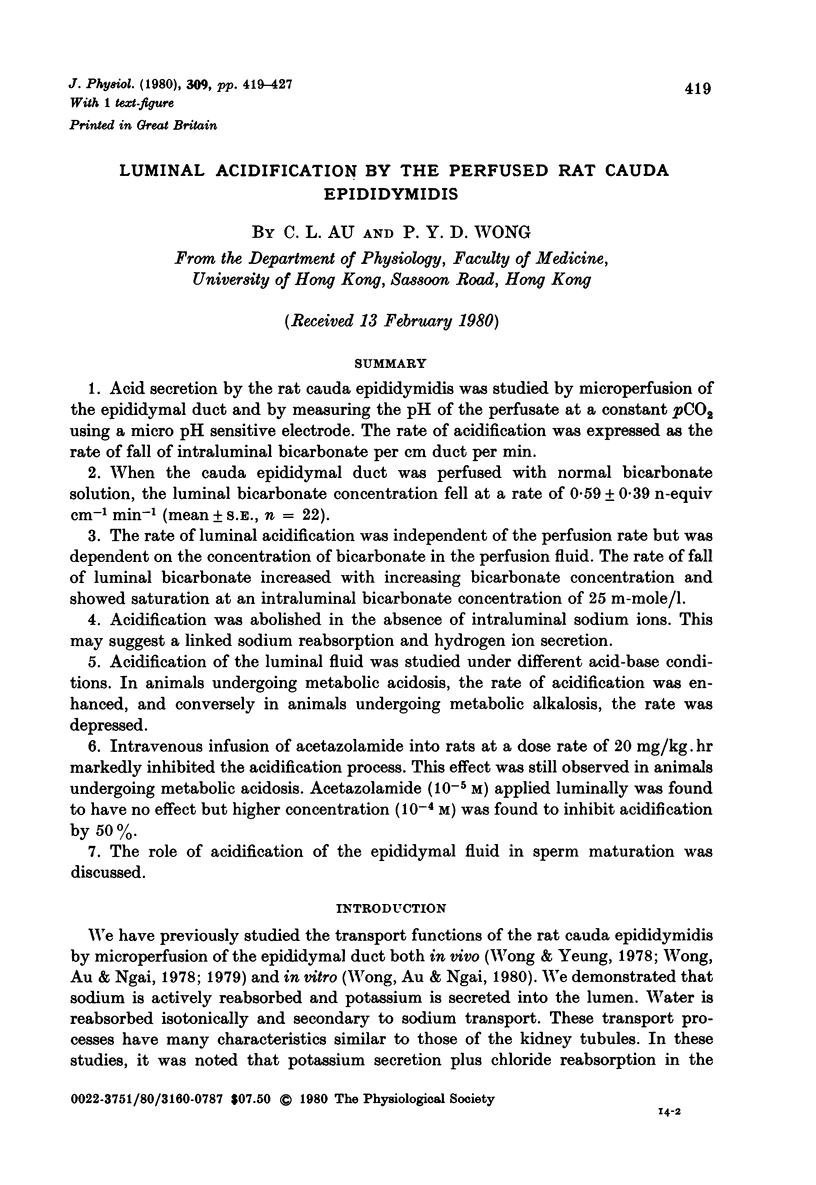
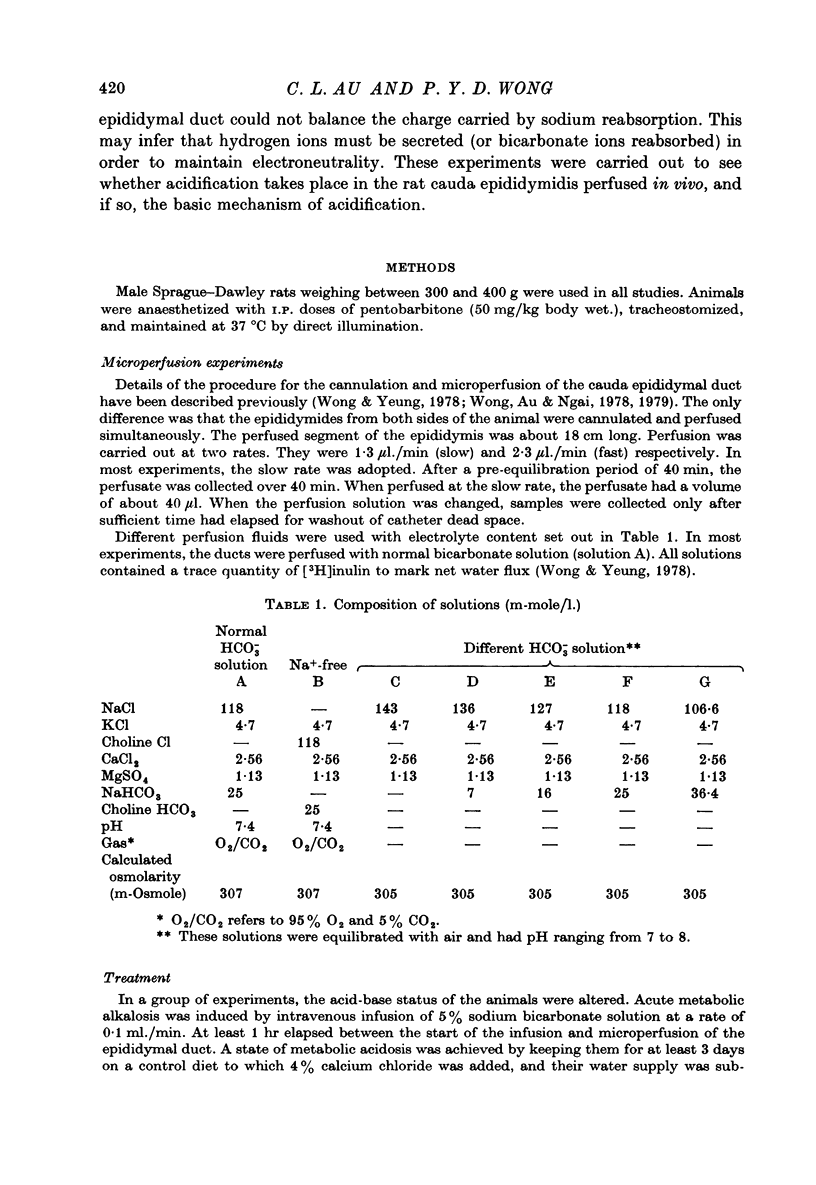
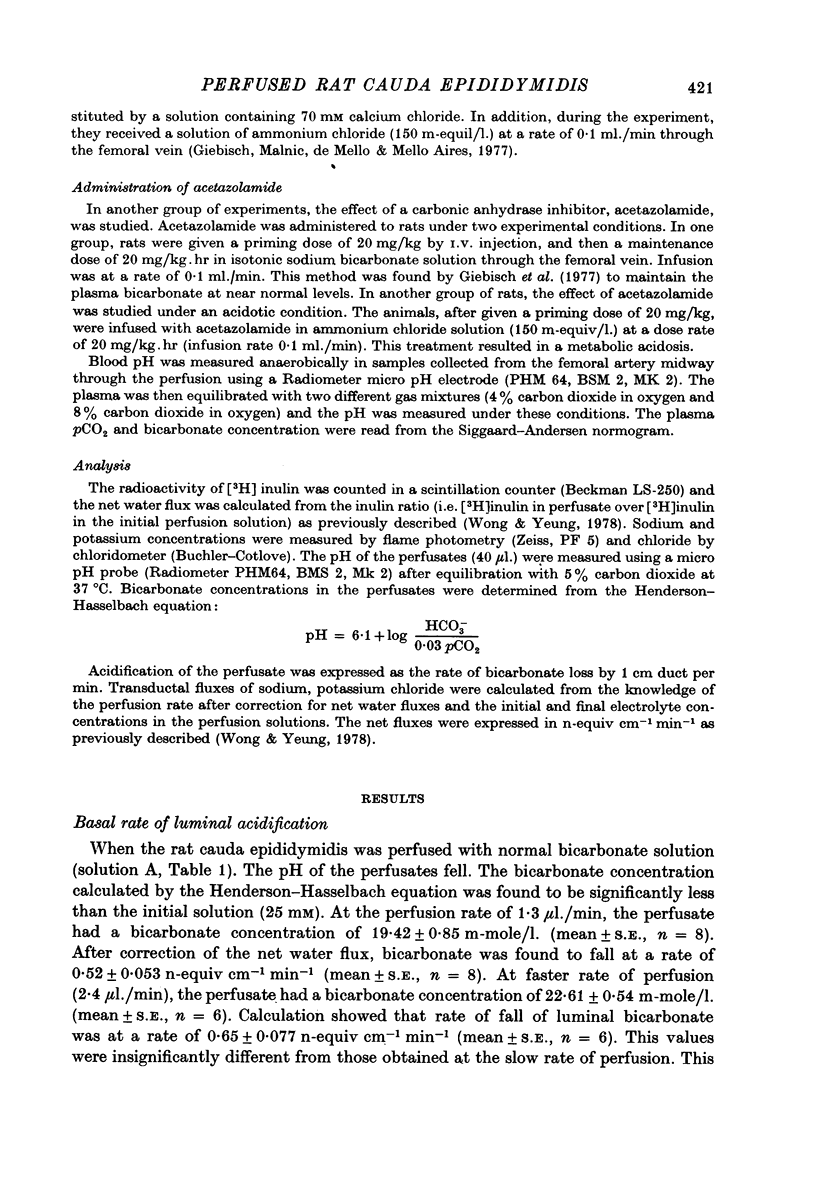
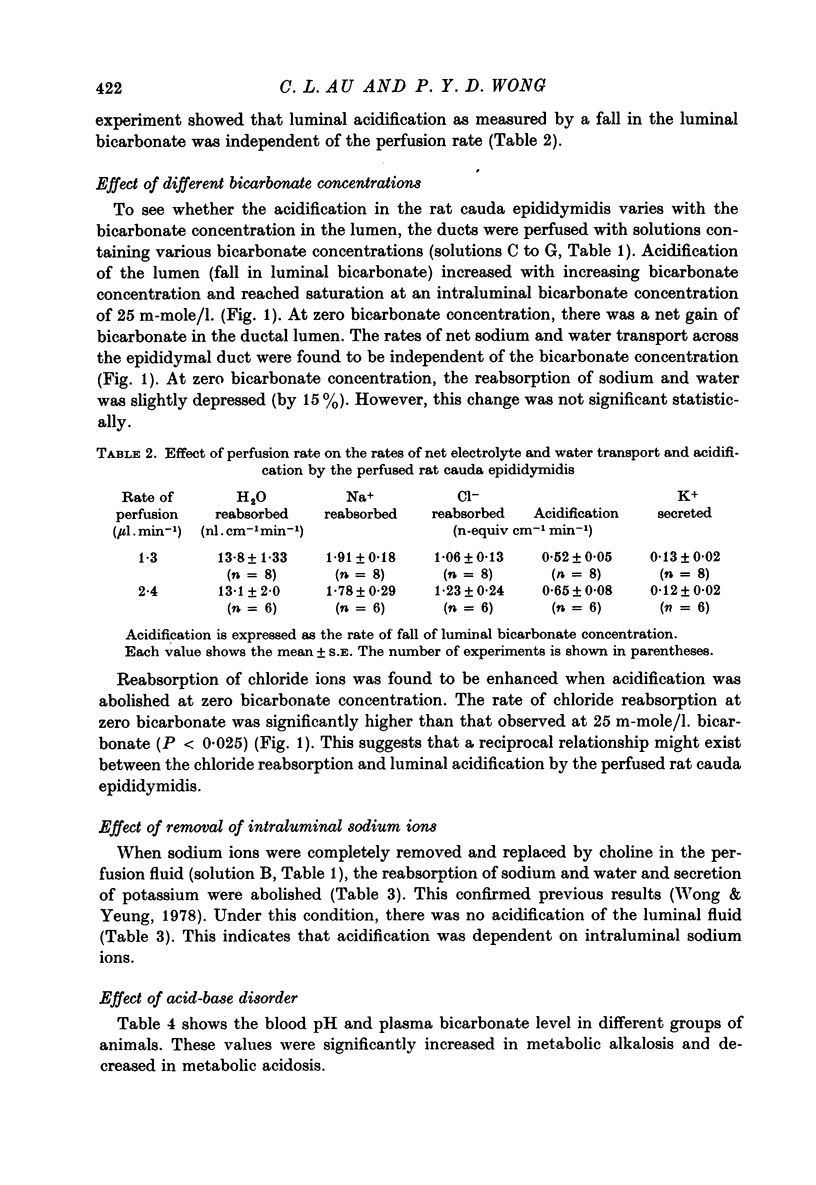
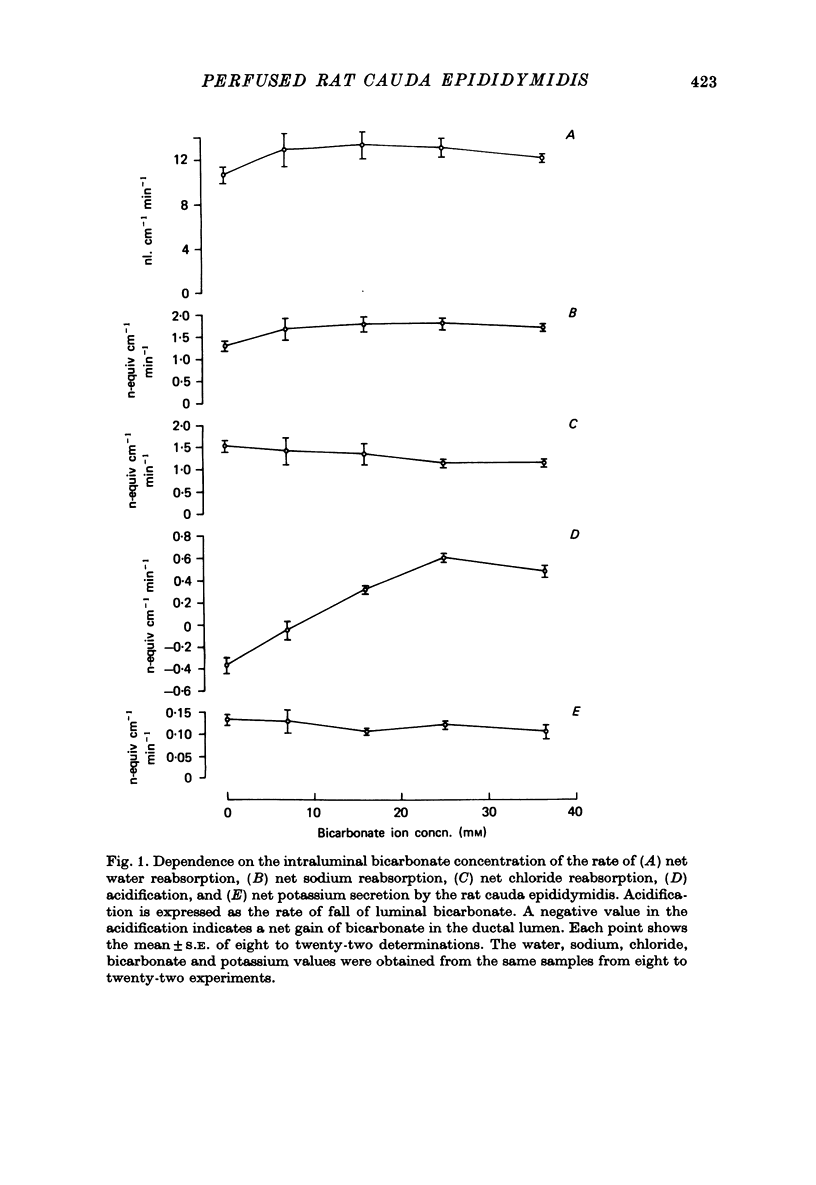
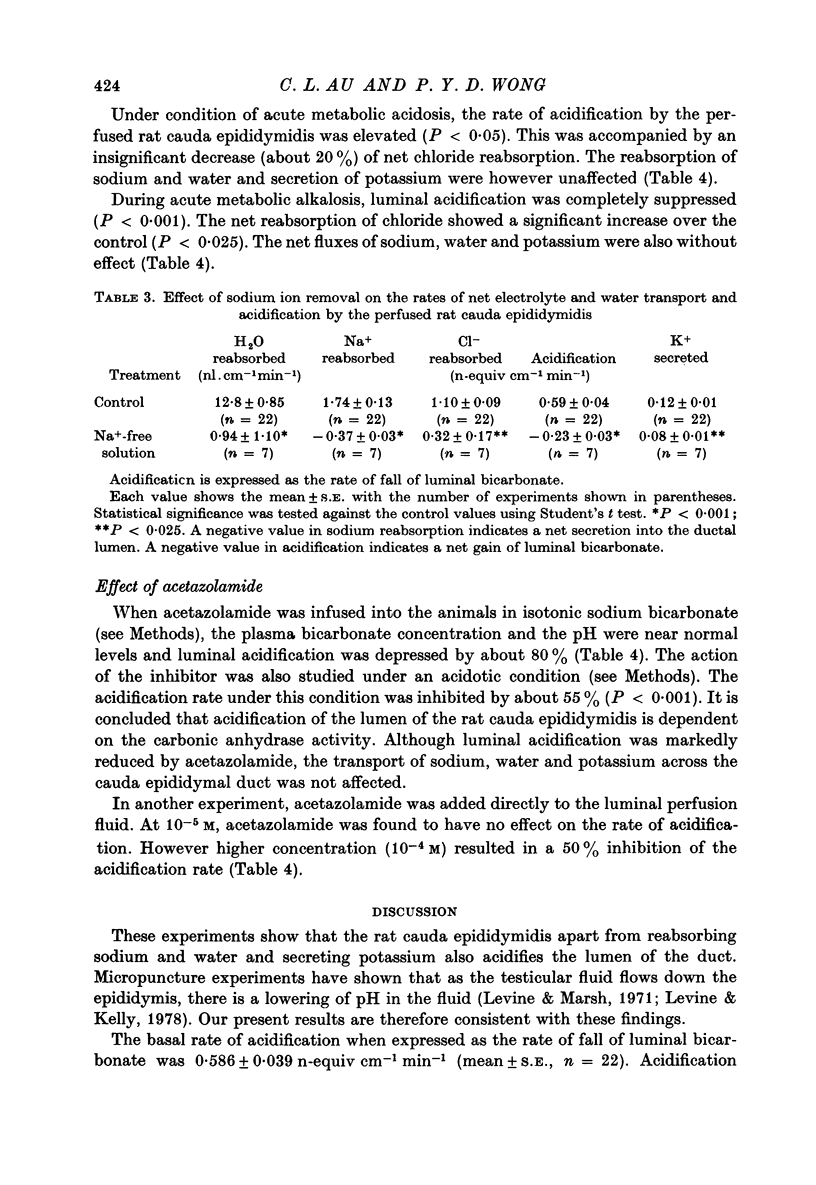

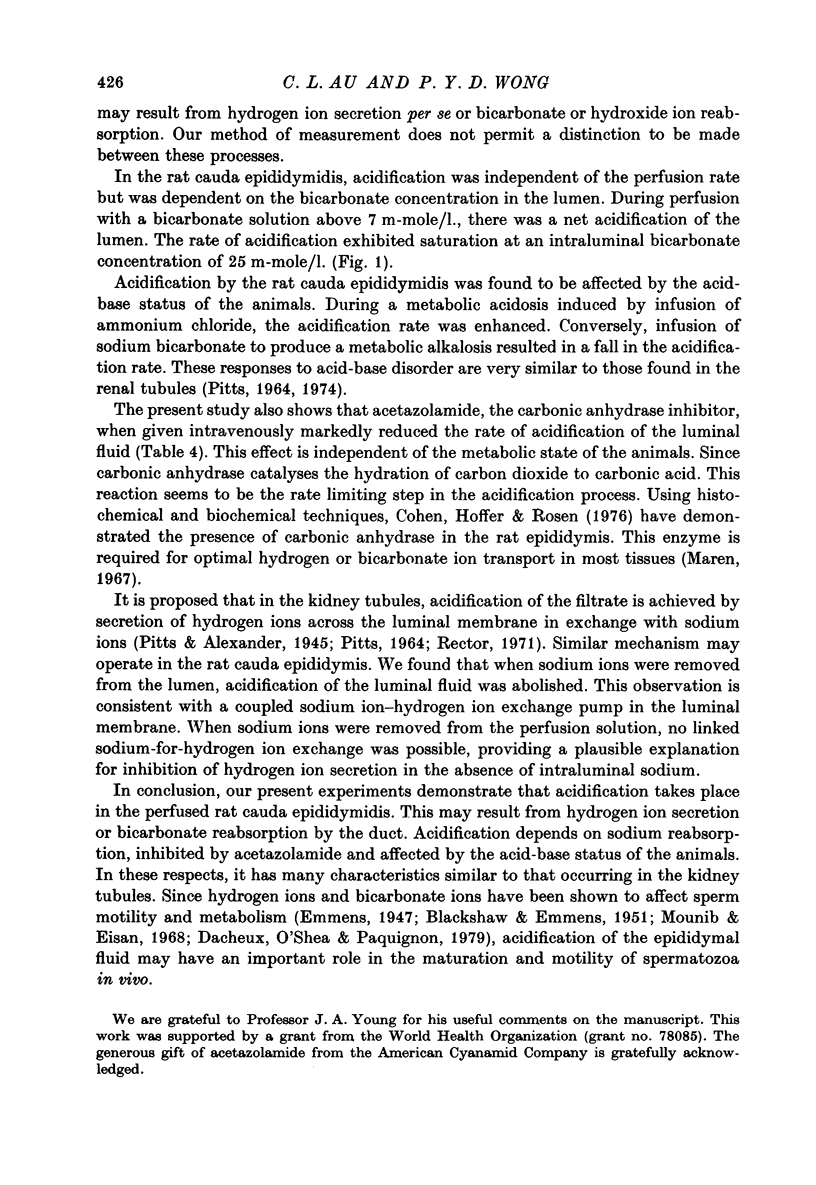
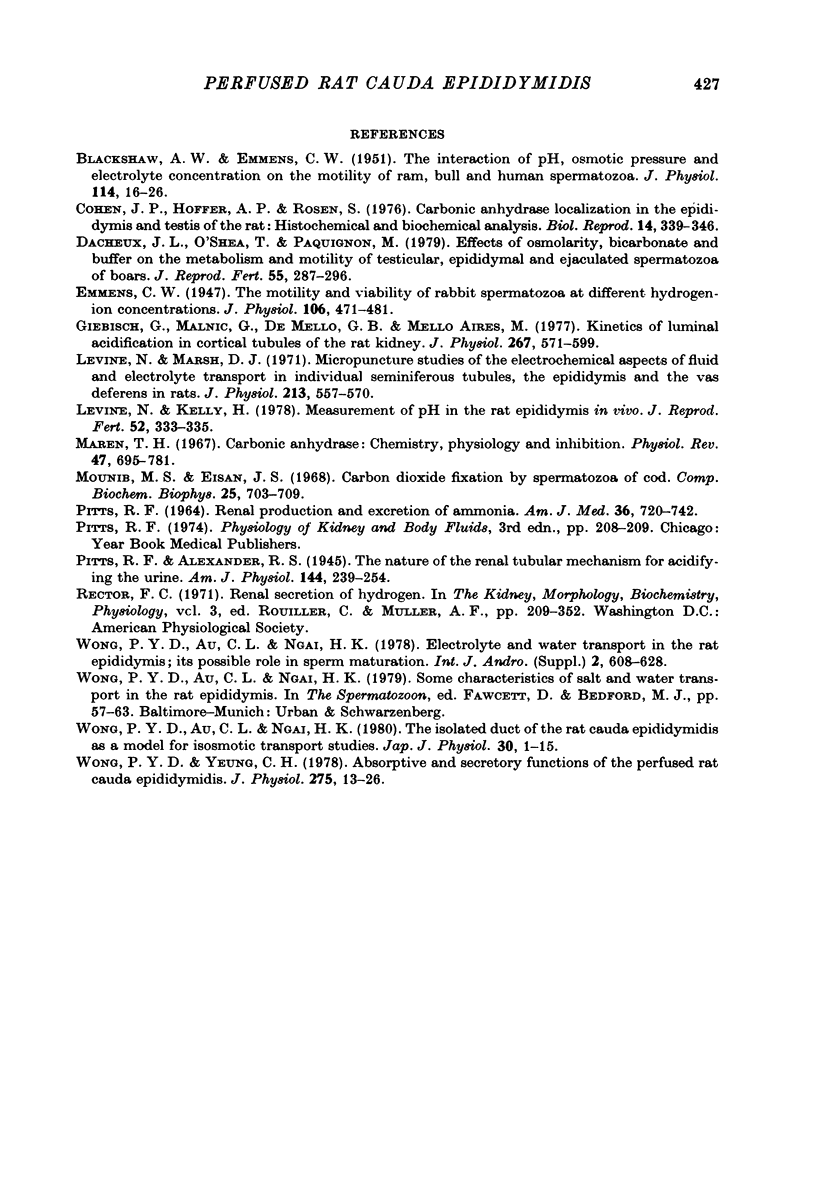
Selected References
These references are in PubMed. This may not be the complete list of references from this article.
- BLACKSHAW A. W., EMMENS C. W. The interaction of pH, osmotic pressure and electrolyte concentration on the motility of ram, bull and human spermatozoa. J Physiol. 1951 Jun;114(1-2):16–26. doi: 10.1113/jphysiol.1951.sp004600. [DOI] [PMC free article] [PubMed] [Google Scholar]
- Cohen J. P., Hoffer A. P., Rosen S. Carbonic anhydrase localization in the epidimymis and testis of the rat: histochemical and biochemical analysis. Biol Reprod. 1976 Apr;14(3):339–346. doi: 10.1095/biolreprod14.3.339. [DOI] [PubMed] [Google Scholar]
- Dacheux J. L., O'Shea T., Paquignon M. Effects of osmolality, bicarbonate and buffer on the metabolism and motility of testicular, epididymal and ejaculated spermatozoa of boars. J Reprod Fertil. 1979 Mar;55(2):287–296. doi: 10.1530/jrf.0.0550287. [DOI] [PubMed] [Google Scholar]
- Emmens C. W. The motility and viability of rabbit spermatozoa at different hydrogen-ion concentrations. J Physiol. 1947 Oct 15;106(4):471–481. doi: 10.1113/jphysiol.1947.sp004228. [DOI] [PMC free article] [PubMed] [Google Scholar]
- Giebisch G., Malnic G., De Mello G. B., De Mello Aires M. Kinetics of luminal acidification in cortical tubules of the rat kidney. J Physiol. 1977 Jun;267(3):571–599. doi: 10.1113/jphysiol.1977.sp011827. [DOI] [PMC free article] [PubMed] [Google Scholar]
- Levine N., Kelly H. Measurement of pH in the rat epididymis in vivo. J Reprod Fertil. 1978 Mar;52(2):333–335. doi: 10.1530/jrf.0.0520333. [DOI] [PubMed] [Google Scholar]
- Levine N., Marsh D. J. Micropuncture studies of the electrochemical aspects of fluid and electrolyte transport in individual seminiferous tubules, the epididymis and the vas deferens in rats. J Physiol. 1971 Mar;213(3):557–570. doi: 10.1113/jphysiol.1971.sp009400. [DOI] [PMC free article] [PubMed] [Google Scholar]
- Maren T. H. Carbonic anhydrase: chemistry, physiology, and inhibition. Physiol Rev. 1967 Oct;47(4):595–781. doi: 10.1152/physrev.1967.47.4.595. [DOI] [PubMed] [Google Scholar]
- Mounib M. S., Eisan J. S. Carbon dioxide fixation by spermatozoa of cod. Comp Biochem Physiol. 1968 May;25(2):703–709. doi: 10.1016/0010-406x(68)90380-0. [DOI] [PubMed] [Google Scholar]
- PITTS R. F. RENAL PRODUCTION AND EXCRETION OF AMMONIA. Am J Med. 1964 May;36:720–742. doi: 10.1016/0002-9343(64)90182-2. [DOI] [PubMed] [Google Scholar]
- Wong P. Y., Au C. L., Ngai H. K. The isolated duct of the rat cauda epididymidis as a model for isosmotic transport studies. Jpn J Physiol. 1980;30(1):1–15. doi: 10.2170/jjphysiol.30.1. [DOI] [PubMed] [Google Scholar]
- Wong P. Y., Yeung C. H. Absorptive and secretory functions of the perfused rat cauda epididymidis. J Physiol. 1978 Feb;275:13–26. doi: 10.1113/jphysiol.1978.sp012174. [DOI] [PMC free article] [PubMed] [Google Scholar]


